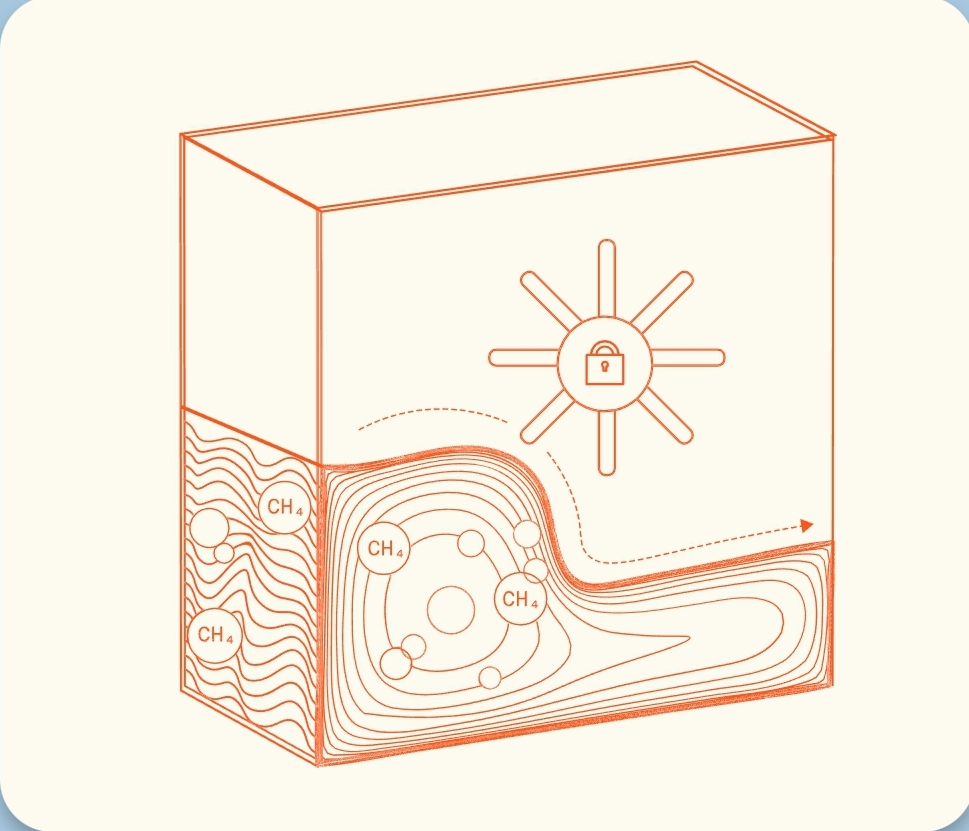Revolutionary Partnership: Mitti Labs and The Nature Conservancy Transform Rice Farming in Northwest India
Revolutionary technology meets traditional agriculture as Mitti Labs partners with The Nature Conservancy to tackle one of climate change’s most overlooked sources of emissions. Their collaboration within TNC’s groundbreaking PRANA program demonstrates how precision monitoring can transform rice farming practices while providing tangible benefits to farmers across Punjab.
The Climate Challenge Hidden in India’s Rice Fields
Rice farming contributes approximately 1 gigaton of CO2 equivalent to global emissions annually—matching the entire aviation industry’s carbon footprint. Moreover, rice cultivation accounts for 12% of global methane emissions, a greenhouse gas 85 times more potent than CO2 in the short term. These staggering figures highlight an urgent need for intervention in rice farming practices.
In Punjab specifically, the environmental crisis intensifies during harvest season. Consequently, two million farmers face a critical time constraint when transitioning from rice to wheat cultivation. Furthermore, climate change has shortened this rotation window to just two weeks, leaving farmers with few alternatives to burning crop residues. Subsequently, these agricultural fires contribute 90% of total crop biomass to air pollution, generating severe health and environmental consequences.
The economic toll proves equally devastating. According to research, stubble burning alone costs India approximately $30 billion annually in air pollution damages. Additionally, more than 60% of Punjab’s population experiences exposure to health hazards from stubble burning. Furthermore, studies indicate that catastrophic health expenditure affects 71% of families in Punjab, with many spending over 10% of monthly income on health-related costs during burning seasons.
Advanced Technology Meets Agricultural Tradition
Mitti Labs brings cutting-edge digital Measurement, Reporting, and Verification (dMRV) technology to address these challenges systematically. Their platform leverages satellite imagery, artificial intelligence, and ground-based operations to monitor agricultural practices with unprecedented precision. Subsequently, this technology delivers country-level scale monitoring with field-level accuracy for greenhouse gas quantification.
The company’s approach integrates three critical layers of technology. First, ground-level data collection establishes environmental and management baselines through smartphone-based tools and IoT devices. Next, satellite monitoring utilizes high-resolution, multi-frequency imagery including synthetic aperture radar, thermal, and optical data. Finally, Geo-Artificial Intelligence combines satellite physical retrievals with process simulations, enabling dynamic learning from new data.
NASA recognized this innovative approach by awarding Mitti Labs $150,000 for Phase I of their SBIR Ignite grant in 2024. Subsequently, the space agency provided an additional $850,000 for Phase II development, demonstrating confidence in the technology’s potential to monitor greenhouse gas emissions from rice farming. This NASA partnership leverages existing global fire monitoring programs while addressing limitations in small-field detection and residue characteristic determination.
PRANA: Building Regenerative Foodscapes Through Innovation
The Nature Conservancy’s PRANA program represents a landmark initiative targeting stubble burning and soil degradation across Punjab. Since 2022, the program has expanded from 1,704 villages in 12 districts to 5,200 villages across 18 districts. Moreover, PRANA plans to reach over 650,000 farmers in 6,259 villages during 2025, delivering more than 21,000 training sessions.
Gyan Prakash Rai, PRANA Lead, emphasizes Mitti Labs’ critical contribution: “Their advanced ‘soil-to-sky’ technology platform and on-the-ground measurement expertise have helped us monitor practice adoption and quantify impacts at the field level with high accuracy”. Furthermore, this robust data validates climate and environmental outcomes while establishing foundations for long-term climate financing opportunities.
The program’s evolution extends beyond crop residue management to address water scarcity, declining soil fertility, and greenhouse gas emissions comprehensively. Additionally, PRANA’s next phase focuses on building Regenerative Foodscapes through farmer institution empowerment, local agri-entrepreneurship scaling, and policy-shaping public-private partnerships.
Climate-Smart Practices Delivering Measurable Impact
Three core practices form the foundation of this transformation: Alternate Wetting and Drying (AWD), Direct Seeded Rice (DSR), and no-burn crop residue management. These techniques address multiple challenges simultaneously while providing economic benefits to farmers.
Alternate Wetting and Drying: Water Conservation Meets Methane Reduction
AWD involves periodically drying rice fields rather than maintaining continuous flooding throughout the growing season. This practice disrupts anaerobic conditions that produce methane while reducing water consumption by up to 40% without negatively impacting yields. Furthermore, AWD can reduce methane emissions by 30-70% compared to continuously flooded cultivation.
The technique requires simple water measurement tubes approximately 30 cm long with perforations across the submerged half. Subsequently, farmers can track water levels accurately, determining optimal irrigation timing. Research demonstrates that AWD enhances root depth and density, making rice more drought and disease-resistant. Additionally, improved soil aeration increases water and nutrient intake, regulating crop growth effectively.
Direct Seeded Rice: Efficiency Through Innovation
DSR involves sowing rice seeds directly into fields rather than transplanting seedlings from nurseries. This method reduces labor costs by 18.45%, machine use expenses by 37.88%, and irrigation costs by 13.77%. Moreover, studies show that small farmers experience a remarkable 47% increase in yields and an 8% rise in net income when employing DSR techniques.
Research across multiple Indian states demonstrates DSR’s economic advantages. Furthermore, the benefit-cost ratio of 2.44 in DSR compares favorably against 1.95 in traditional transplanted rice methods. Additionally, DSR adoption increases net income by Rs. 5,009 to Rs. 8,134 per acre across different locations. However, effective weed management remains crucial for maximizing DSR benefits, as weed infestation represents the primary challenge.
No-Burn Crop Residue Management: Breaking the Pollution Cycle
Traditional residue burning creates severe environmental and health consequences, but alternative management strategies offer sustainable solutions. Research shows a 19% reduction in farmers burning crop residues between 2021 and 2023 in Punjab. Additionally, incorporation of residues—the most prevalent alternative practice—witnessed a 3% increase during this period.
The adoption of short-duration rice varieties provides farmers more time for residue management. Furthermore, the percentage of plots cultivating the short-duration PR-126 variety increased from 19% in 2021 to 51% in 2023. This shift allows farmers to avoid burning while maintaining productivity schedules.
Technology-Driven Monitoring and Verification
Mitti Labs has created a “digital twin” covering 25% of all rice farming areas in India—approximately 10 million hectares—within just 24 months. This comprehensive monitoring capability enables real-time tracking of practice adoption and environmental impact quantification. Subsequently, the technology helps PRANA teams direct program interventions toward regions of greatest need while providing visibility into on-ground team effectiveness.
The platform’s real-time analytics offer forward-looking forecasting capabilities beyond traditional end-of-season assessments. For instance, farmers receive recommendations on optimal field drainage timing to maximize methane reduction without sacrificing yields. This approach transforms monitoring from passive observation to active decision support for climate-smart agriculture.
Digital MRV technology addresses critical challenges in carbon credit verification. Traditional verification costs often exceed $6-8 per tCO2e for small projects, eroding developer margins. However, digital solutions can reduce verification costs by up to 70% while maintaining accuracy and transparency. Furthermore, blockchain-based data transparency ensures immutable records and audit trails for carbon credit buyers.
Economic Benefits and Market Opportunities

The partnership demonstrates significant economic advantages for participating farmers. Climate-smart practices increase farm household incomes by more than 40% compared to non-adopted villages. Moreover, during drought conditions, farmers utilizing these practices maintain 19.5% higher incomes than those using traditional methods. The PRANA program alone is projected to save 500 billion liters of water—equivalent to a mid-sized city’s annual consumption.
Carbon credit opportunities provide additional revenue streams for farmers adopting sustainable practices. Agricultural credit issuances grew by 125% between 2019 and 2022, though they represented only 5% of total credits issued. Furthermore, India’s carbon market potential reaches $30-50 billion by 2050 at conservative pricing of $15 per carbon credit from agriculture. This represents substantial opportunities for farmer income enhancement through verified emission reductions.
Mitti Labs has secured $3 million in seed funding from prominent investors including Lightspeed Venture Partners, Voyager Ventures, Cisco, and Volta Circle. This investment supports the company’s mission to decarbonize the $300 billion global rice-growing industry. Additionally, the funding enables expansion across 30,000 hectares in India with partnerships involving Syngenta Foundation and Tilda rice maker Ebro Foods.
Scaling Impact Through Partnership
The collaboration between Mitti Labs and The Nature Conservancy represents a scalable model for agricultural transformation. Xavier Laguarta, co-founder of Mitti Labs, emphasizes the partnership’s validation: “Helping hundreds of farming communities in NW India transition to Climate-smart practices truly validates our mission of turning rice farming into a powerful vehicle for climate action”.
The partnership addresses multiple stakeholder needs simultaneously. Farmers benefit from reduced costs, increased yields, and new revenue opportunities through carbon credits. Environmental advocates see measurable reductions in methane emissions and water consumption. Furthermore, policymakers gain access to robust data for evidence-based decision-making and program scaling.
Research partnerships with Cornell University, the International Rice Research Institute, and USDA strengthen the scientific foundation for methane abatement and measurement technologies. These collaborations ensure that solutions remain grounded in rigorous scientific methodology while maintaining practical applicability for smallholder farmers.
Future Implications and Global Potential
The success in Punjab demonstrates potential for global scaling across rice-producing regions. Rice cultivation covers 10% of total agricultural landmass in Asia, representing enormous opportunities for emission reductions. Furthermore, reducing methane emissions from rice by 50% could save 0.5 CO2e gigatons in greenhouse gas emissions annually.
The PRANA model’s evolution toward Regenerative Foodscapes provides a blueprint for comprehensive agricultural transformation. Beyond immediate emission reductions, the program addresses systemic challenges including water scarcity, soil fertility decline, and farmer economic resilience. Additionally, policy-shaping partnerships create frameworks for widespread adoption of sustainable practices.
International recognition of methane reduction’s importance continues growing, with COP28 and various national pledges emphasizing agricultural emission reductions. The Inflation Reduction Act and USDA’s $3 billion investment in Partnerships for Climate Smart Commodities create additional momentum for agricultural carbon projects. Furthermore, these policy developments support scaling verified emission reduction programs globally.
The Mitti Labs-Nature Conservancy partnership proves that technology-driven solutions can address climate challenges while supporting farmer livelihoods. Their integrated approach—combining advanced monitoring, practical training, and economic incentives—creates a sustainable model for agricultural transformation. As global attention focuses on methane reduction and climate-smart agriculture, this collaboration provides a roadmap for scaling impact across rice-producing regions worldwide. Through continued innovation and partnership development, such initiatives can significantly contribute to global climate goals while supporting rural communities’ economic prosperity.

